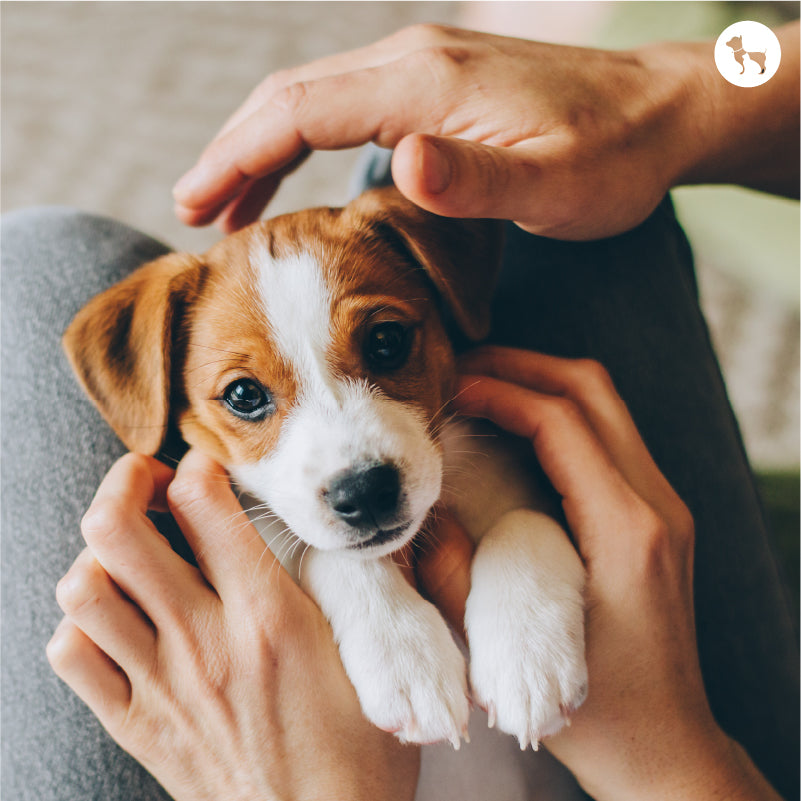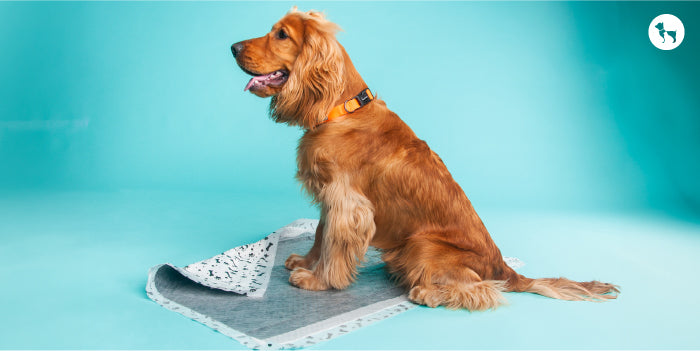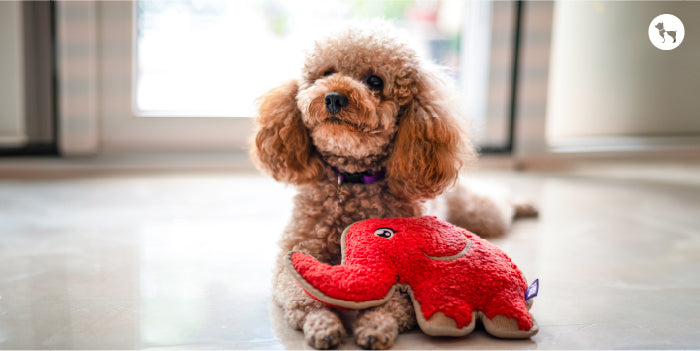
Puppyhood, in our years of experience, is a rite of passage for every pet parent. It is truthfully one of the most beautiful, albeit tough, journeys we can be a part of for our dogs. Then comes adulthood, where we get to learn more about these happy, always curious, sentient beings. And as we change the calendars and watch the months go by, our dogs’ hair and snout start to grey and they officially become senior dogs.
No matter how old our dogs get, they’ve proven for decades that growing old with them is a privilege. They’re the apple of our eyes, a fresh breeze over a clear sky and a streak of gold in our tapestry called ‘life’. And if you’ve just decided on opening your home to a dog, then you’re in the right place.
We’ve broken down the ‘how to welcome a dog into your home’ question into 3 different steps:
|
Table Of Contents: 1. REDEFINING (PET) PARENTHOOD 3. Dog Bowls 6. Pee Pads for Puppies and Senior Dogs 8. Pet Brush 9. Pet Wipes 11. Dog Toys 12. Dog Crate 13.FAQ |
Studies have confirmed that looking at puppy and dog pictures gives us the same amount of dopamine (feel-good hormone) as looking at an adorable human baby. We look at our pets as our own children. While the love is similar in nature, the stark difference one can't ignore is that our furry ones' needs are extremely different from a human baby’s. Raising a dog (of any age or special circumstance) brings with it its own set of challenges, the biggest being that at the end of the day, they’re a species different from us living under our roof. Our love should come from respect for the species, its history and a will to do better.
Raising dogs means being physically, mentally and emotionally available pet parents who’ll do their best to understand and satisfy their needs. We should all strive to ensure that our dogs grow up to live a joyful and healthy life. There’s an abundance of information available for you to soak in. So before you bring your new furry family member home, you’ll want to read up and make your house ready for their arrival.
Today, we’ll share with you tips on how to welcome a dog into your home along with 10 dog essentials. This list of dog supplies is handpicked to give you a glimpse of the products you’ll need and also briefly explain why you’ll need them. (So you know where you’re investing your money!).

Your dog will need multiple dog bowls according to your dog’s age. One for food and a few for water that you can keep around the house. Dogs need constant hydration, especially in the summers. As you bring home your dog, you’ll want to make sure these dog bowls are kept in a cool, dry area with plenty of shade. (Some steel bowls can overheat in the sun). This will help your dog create a routine as they’ll associate their meal and water sources with one specific place. And a tip from seasoned pet parents: routine is great for your dog’s overall well-being.
We can’t stress the importance of nutrition for our dogs. They no longer live in the wild and are dependent on us to provide for them. Plenty of options are available but you’ll want to choose dog food and dog treats that are free of all junk such as additives, preservatives and fillers and focus on the good - protein, carbohydrates, fibre, minerals and antioxidants.
Dog treats are also a great way to bond with a dog if you’re introducing them to a new territory for the first time. It will help them associate positive feelings with your house from the get-go!
HUFT Tip: If you wish to know more about how you can choose the right dog food, we’ve covered a lot in our other blogs ‘How to choose healthy food for pets’. A must read: ‘How To Read Pet Food Packaging Label The Right Way’ and our recent blog on ‘Maintaining A Balanced Diet For Your Pets’.
Our dog’s dining area is set. Next, it’s time to choose where they’ll sleep. We’re all guilty as charged for letting our dogs sleep on our bed or even the couch. Most of the time, we don’t mind as our dogs love to snuggle next to us. So why have a dog bed or even a dog mat?
On average, puppies need 18-20 hours and dogs need 12-14 hours of daily sleep. Recently, we did a survey with Indian pet parents and found that our dogs change their sleeping positions and areas throughout the night depending on how hot or cool they are feeling. Other studies have also shown that dogs feel a sense of belonging and comfort when they have a bed they can call their own.
This is why it’s great to give them options for different sleeping areas that cater to their sleeping patterns. Lounger dog beds are great if you have a big dog who loves (as the name suggests) to lounge around and enjoy plenty of space. Sofa dog beds are designed with a soft and comfortable mattress and oval beds are created for dogs who love to curl up. And if you’re bringing home a senior dog, you’ll want to opt for an orthopaedic dog bed that allows them to get on/off without straining their knees.
There are some dogs who prefer to sleep flat on their tummies and for them, we recommend flat dog beds or dog mats. We also find dog mats to be extremely convenient to carry while travelling with our dogs. Naps are important, even if they’re in the middle of nowhere!
HUFT Tip. It’s a good idea to get these dog supplies (and more) before your doggo comes home. You can buy them on our website or simply reach out to your nearest HUFT store. And yes, we deliver to your doorstep!

If you’re just getting a puppy home, you’ll want to have an area (either in the balcony or your bathroom if it’s big enough) where your little one can be toilet trained. And for this particular part of dog training, you’ll need puppy pee pads that absorb well, have 48-hour odour protection and don't leak on your floors. It’s really important to train them right as your puppy should ideally stay indoors till all of their vaccinations are completed.
Pee pads aren’t just for puppies. They’re also useful if you're bringing home a differently abled or senior dog who has trouble getting up and going for walks outside. Disposable dog diapers are also a great option if you’re looking for one.
Read More: How To Toilet Train Your Puppy by Shirin Merchant
As a new pet parent, there are some basics of walking your dog that you must know. First, dogs learn about the world by sniffing everything while on walks. Yes, we mean everything. A regular walking schedule also prevents our dogs from turning aggressive. All that pent-up energy that their ancestors used to use while running around in the wild? Yeah, that’s got to go somewhere.
Second, a good dog harness and dog leash are one of the first things you ought to get before your pet even goes outside. Why are they important? Because for your dog they mean safety when they’re out on a walk.
Lastly, in our other dog walking blog we explained how walk essentials are a symbol of trust that communicates to our dogs - “I’m with you and I’ve got your back”. Every nudge and every tug on the leash communicates to our pets what we’re feeling about our situations outdoors. A tug away from a person can translate to our dogs to not approach them head-on. A loose leash can mean they're allowed to explore as they please. Walks are the best source of bonding with our dogs and socialising them to the outside world.
Now a common question that’s asked is what’s the different use of a dog harness and a collar? The science behind selecting a dog harness over a dog collar for a walk is that instead of putting pressure on your dog’s neck, it evenly distributes your dog’s weight while walking. Plus, it’s designed to withstand strong pulling on the leash. Dog collars on the other hand work great for say, for example, someone’s coming home and you need a way to hold onto your dog whenever the situation presents itself. As long as you’re not pulling on our dog’s necks, you should be good.
What’s also important is that you train your dog to not pull on their dog leash. If you have any trouble on this training journey, you can always get in touch with a canine behaviourist for the same.
HUFT Tip: We recommend that your pet always wear an updated and personalised name tag on their harness before going for a walk. Keep a spare at home just in case one gets lost.
Can you recall the nostalgia of our mothers or grandmothers gently combing through our hair when we were younger? What used to be a simple childhood chore has now become a cherished memory. The sentiment extends to our dogs as well. We often say it and we mean it - grooming our pets is a language of love in its own right. The entire ritual of choosing the right dog brush and carefully running it through our pet’s fur as they lay on their bellies, is an effortless way to bond with our dogs.
Regular brushing is important to prevent tangling, matting and shedding of the fur which can cause our pets great discomfort. The activity also helps distribute natural oils, keeping their hair strong and shiny. Choosing the right dog brush depends on the specific needs of your dog’s coat.
Slicker dog brushes are fantastic for removing loose fur and preventing tangles, making them ideal for dogs with long and curly coats. A deshedder with rake acts as a 2-in-1 tool with the deshedder brushing out the stubborn undercoat and the rake capturing the loose and dead hair (great for heavy coats). A double-sided pin dog brush with rounded tips work well for regular grooming and maintaining a soft and smooth coat.
In addition to this, the dog grooming glove is so easy to use! It’s perfect for a more hands-on approach, allowing for a massage-like experience for your pup while easily removing loose hair. We love using it on our dogs during a bath.
The options are endless!

Now there’s bathing your dog of course and for bath days you can choose dog shampoos and dog conditioners. But what about the majority of the in-between bath days? How does one keep their dog clean and smelling good? Your dog can easily get some goop in their eyes or just gather dust on their hair from going on a walk outside. For such days, non-alcoholic pet wipes will be your saviour. We recommend reading about the product and picking one that’s chemical-free and safe to use on your pet’s entire body.
HUFT Tip: When it comes to canine hygiene, don’t forget oral care. Plaque and tartar are common causing stinky breath and dental issues. All you’ll need is a brushing routine using dog toothbrush and dog toothpaste. There are many tasty dental dog treats available too.
Raising a pet can get messy. And we mean it literally. Whether it’s your puppy in the process of being toilet trained or your senior dog has those occasional accidents, it’s inevitable that your house can get a little dirty. In these situations, a kid-safe and pet-safe stain odour remover becomes an essential tool for maintaining a clean and fresh living environment for all. These specialised products are designed to easily remove any visible stains caused by dog urine, faeces or even vomit.'

Our dog’s daily doses of joy are hidden inside their toys. After all, what’s a dog’s life without some play! By giving them multiple dog toys to play with, you can a) give them a way to channel their energy b) give you both time to bond over a game of ball and c) make their lives more delightful!
Each type of a dog toy satisfies a different need. Squeaky plush toys for dogs not only engage their natural hunting instincts, they also offer them comforting companionship (especially if you have a young pup). Meanwhile, chew dog toys and rope dog toys both serve a dual purpose by promoting dental health and reducing their inclination to gnaw on household items or your beloved shoes. They also help puppies get some ease from teething pain. To keep their mental gears turning, interactive dog puzzles were created. Not only does it challenge our pet’s cognitive abilities, it keeps their mental health in check.
When it comes to outdoor fun, durable fetch toys for dogs become the go-to, ensuring physical exercise and a healthy lifestyle. Lastly, let's not forget the iconic dog balls – these not only enhance coordination but offer a perpetual source of amusement.
Just as dog toys are essential for a dog’s well-rounded happiness, a designated dog playpen or barrier adds an extra layer of security to the environment. Playpens provide a designated space for exploration, allowing dogs to move freely while ensuring a safe and confined area. This is especially beneficial for puppies during their curious stages where they tend to roam off! They also prevent access to certain areas and safeguard against potential hazards.
Now that you have all the dog essentials in place, all you have to do is prepare yourself to interact with your new bundle of joy! The way we see it, think of meeting a new dog as if you’re going on your first date. Be mindful of boundaries, read their body language and gauge how they respond to you and the new surroundings. When in doubt, think like a dog - you’re in an unfamiliar territory. Your goal as a pet parent is to establish a long-lasting trusting relationship. Allow the dog to approach you at their own pace. By doing so, you’re laying the foundation for a meaningful connection. As trust begins to blossom, your furry companion will come to realise the joy and security of having a forever home!
Although the answer cannot be summed up in two words, we’ll try - planning and supplies. Start by reading up on the things you’ll need (which we’ve mentioned in this blog) and then prepare your home for the same. It’s a good idea to puppy-proof your home by removing any sharp objects and toxic plants. Next, choose an area where they’ll eat, sleep and pee. The day they come home, gradually introduce them to the different parts of the house. Give them time to explore on their own. With time, you can establish a routine for feeding, walks and bathroom breaks to help them feel secure. Last but not the least, provide them with plenty of love, attention and positive reinforcement to help them adjust to their new home well.
Before you venture into the world of dog training, it’s important to learn about positive reinforcement training. This means using only words of encouragement and rewards instead of causing physical harm to your dog. Hurting your dog will only cause them to be either anxious or fearful of you or make them act out of aggression. Consistency, patience and praise at the right time is the key to an effective dog training session. Keep the lessons short and remember to shower them with tons of love!
Toilet training your dog takes time initially so patience is the key. Start by choosing a place where you can keep your dog’s litter box. Make the area accessible by your dog (a balcony or a backyard works too). Encourage your dog to investigate the litter box by using treats and words of encouragement. Observe your dog’s pee schedule and each time you feel they’re about to relieve themselves, gently guide them towards the box. If your dog misses doing their business in the box, do not punish them for it as it’ll only cause them to be fearful of you. This will eventually make them stop relieving themselves in front of you, even when you take them out for walks.
We get this question a lot. The first trick is to know which dog toy serves what purpose and use them right. Toys are meant to channel your dog’s natural hunting instincts into play. For example, plush dog toys give dogs companionship. Chew toys help relieve teething pain and promote dental health. Interactive toys keep their minds active and entertained. Fetch toys make them exercise more than say a cuddle toy. The next trick is to read up about the toy as much as you can. Read customer reviews and opt for durable materials that can withstand your dog’s level of playfulness. Avoid toys which have small parts as it can be swallowed or turn into a choking hazard. And lastly, always opt for age and size-appropriate toys for your dogs.
Human toothpaste contains xylitol and high levels of sodium, both of which are highly toxic for dogs and can cause them to have an upset stomach or make them fall severely ill. Which is why we always recommend getting dog toothpaste to promote your dog’s dental health. They help prevent dental issues such as plaque, tartar buildup, gum disease and the infamous bad dog breath. To brush your dog’s teeth, start by getting them to be comfortable with you touching their teeth. Use a small amount of dog toothpaste on a dog toothbrush or finger brush, and gently brush your dog’s teeth in a circular motion. Ideally, you should brush your dog’s teeth at least 2-3 times a week for optimum dental health.